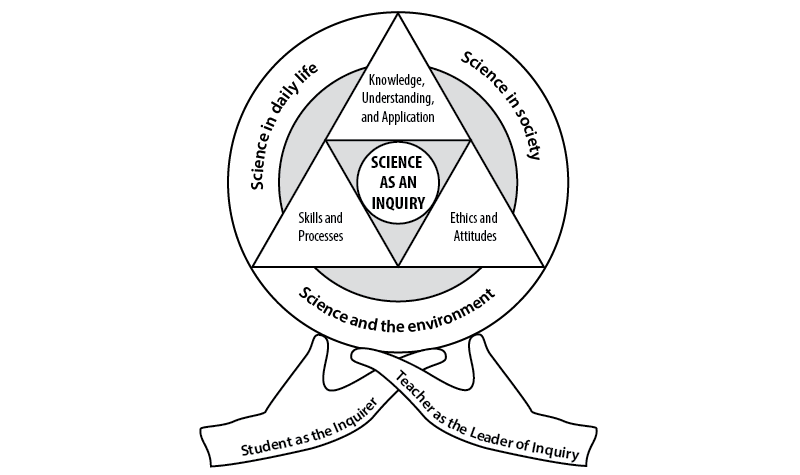The Science Curriculum in Primary and Lower Secondary Grades
The Singapore Science Curriculum Framework (Exhibit 4) is structured around the spirit and practices of scientific inquiry21 and defines three integral domains essential to the practice of science: knowledge, understanding, and application; skills and processes; and ethics and attitudes. The curriculum enables students to appreciate the pursuit of science as meaningful and useful, as it is grounded in knowledge, issues, and questions that relate to the role of science in daily life, society, and the environment.
Exhibit 4: Singapore Science Curriculum Framework22

© Ministry of Education, Singapore (Reproduced with permission by the Ministry of Education, Singapore)
The primary and lower secondary science syllabi are designed around themes that students can relate to in their everyday experiences and on commonly observed phenomena in nature. The five themes at the primary level are diversity, cycles, energy, interactions, and systems. The lower secondary science curriculum builds on the themes at the primary level, with an additional theme on models, and continues the way science is taught at the primary level as a way of exploring and understanding the physical and natural world. Lower secondary students are introduced to scientific endeavor to develop their understanding of how science is practiced and applied, and are provided with further hands-on learning opportunities situated in everyday contexts. This allows students to make connections in science with their own lives and the environment. Exhibit 5 presents a summary of the topics to be learned under each theme by the end of Grade 8 (Secondary 2).
Exhibit 5: Science Themes and Topics
| Primary Science Grades 3–6 | Lower Secondary Science Grades 7–8 |
| Diversity | |
|
|
| Cycles | |
|
|
| Energy | |
|
|
| Interactions | |
|
|
| Models | |
|
|
| Systems | |
|
|
